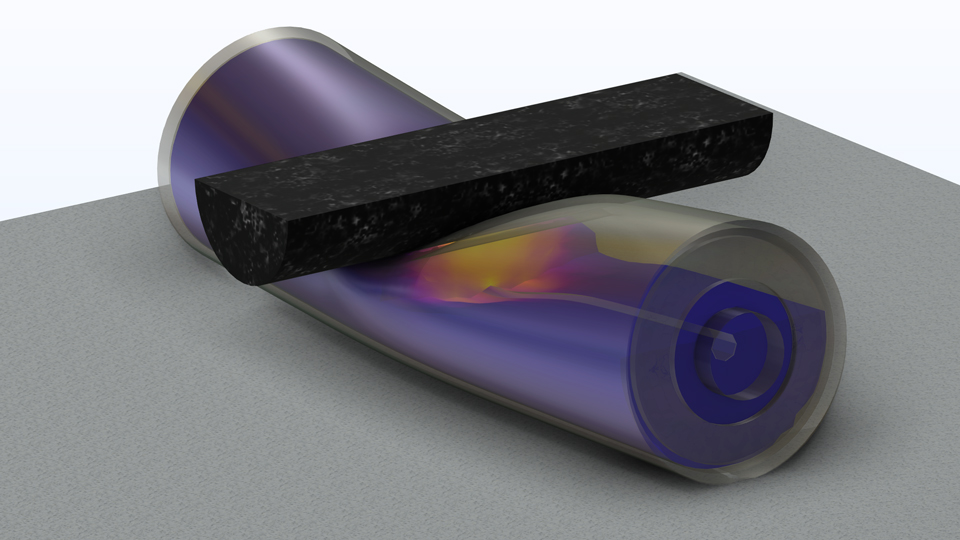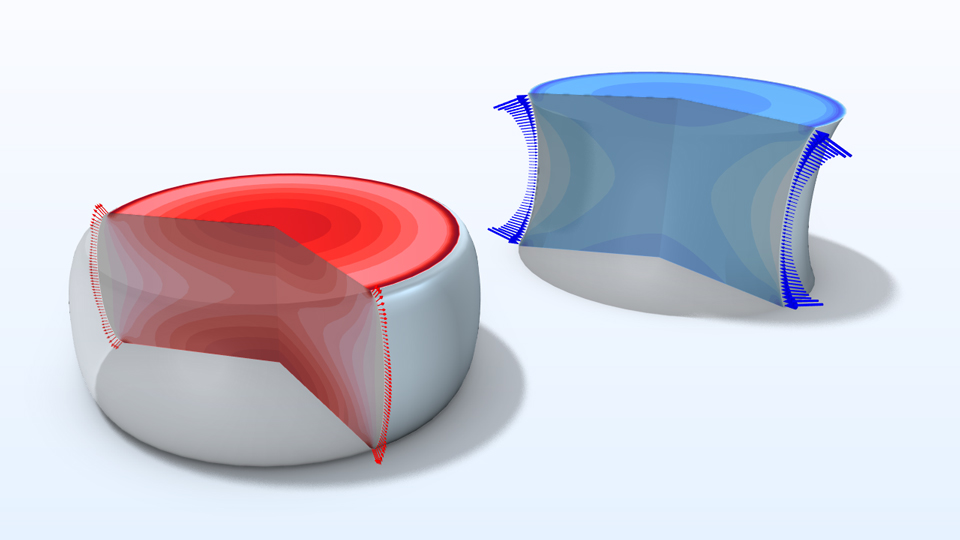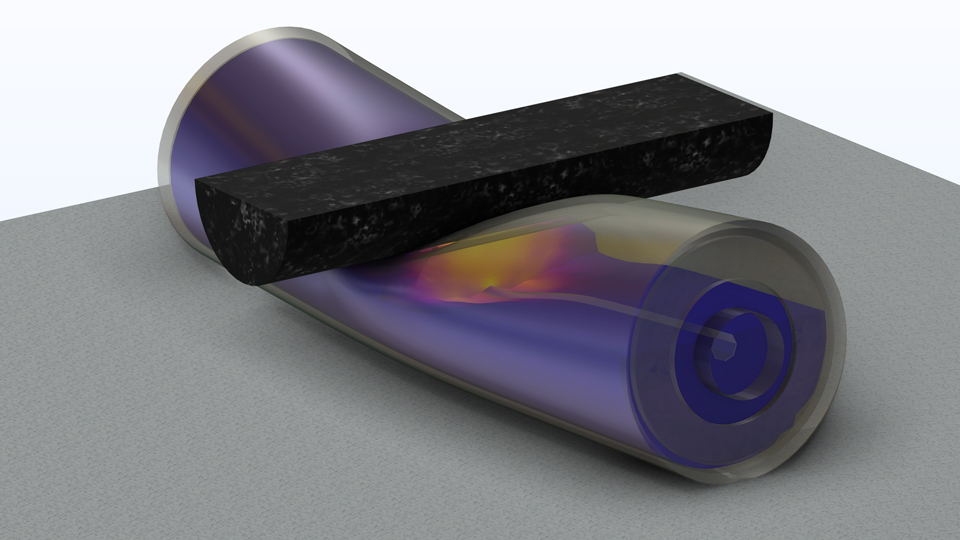Nonlinear Structural Materials Module Updates
For users of the Nonlinear Structural Materials Module, COMSOL Multiphysics® version 6.4 introduces nonlinear material models and phase-field damage modeling for explicit dynamics, along with a new feature that enables faster computation of inelastic strains. Read more about these updates below.
Nonlinear Material Models for Explicit Dynamics
To improve efficiency in time-explicit analysis, the material models for hyperelasticity, plasticity, creep, and viscoplasticity have been revised. These enhancements also deliver significant performance gains in other types of studies. The following models demonstrate these improvements:

New Phase-Field Damage, Explicit Dynamics Multiphysics Interface
To model the evolution of damage and cracks in solids under dynamic conditions, the new Phase-Field Damage, Explicit Dynamics multiphysics interface combines the Solid Mechanics, Explicit Dynamics interface with the Phase Field in Solids interface through a Phase-Field Damage bidirectional multiphysics coupling. View the new interface in the updated Phase-Field Modeling of Dynamic Crack Branching tutorial model.
Dynamic fracture of a brittle material analyzed using the AT1 phase-field damage model and explicit dynamics.
Hencky Strain Decomposition
The new Logarithmic (Hencky) strain decomposition option enables faster computation of inelastic strains when compared to the traditional multiplicative decomposition. For instance, plasticity algorithms run significantly faster with this approach. The improved performance when selecting this option is demonstrated in the updated Compression of an Elastoplastic Pipe tutorial model, where the computational time is reduced by 30%.
A metallic pipe is squeezed between two stiff indenters until it is almost flat.
New Tutorial Models
COMSOL Multiphysics® version 6.4 brings several new tutorial models to the Nonlinear Structural Materials Module.
Indentation of a Cylindrical Battery Cell
Large-Strain Poroviscoelastic Model of Brain Tissue*

*Requires the Porous Media Flow Module
Phone Drop Test
Simulation of a drop test of a cell phone. The collision causes cracks to propagate in the glass.
Crimping of a Cable Terminal
Residual von Mises stress in a cable crimp joint after formation.
Needle Penetration
Needle insertion into tissue-like material is modeled using a cohesive zone approach to capture fracture behavior.

